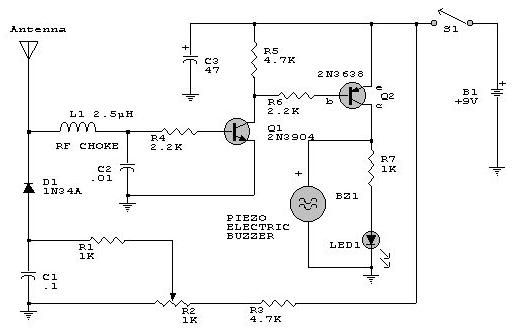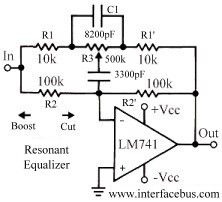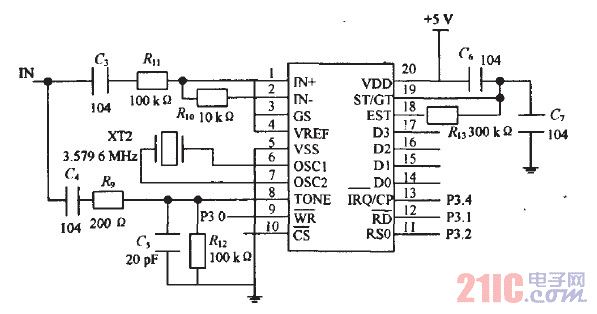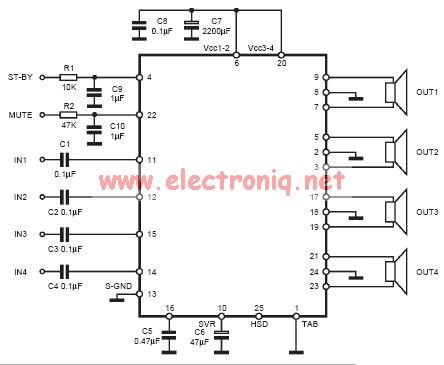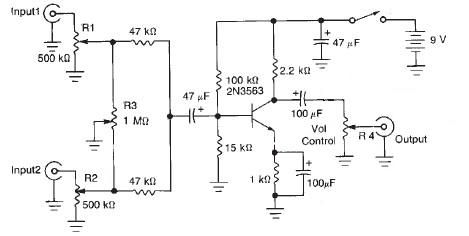
LED-Driver Design for Automotive Rear Lighting
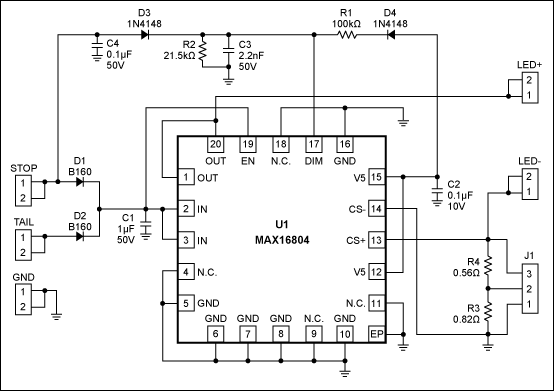
This article discusses the design of an LED driver for automotive rear lights. It demonstrates that dimming is most effectively accomplished using pulse-width modulation (PWM) in conjunction with an LED driver integrated circuit (IC) that removes the requirement for an external PWM signal.
The LED driver circuit for automotive rear lights is essential for ensuring optimal performance and compliance with automotive lighting standards. The design focuses on utilizing an LED driver IC that incorporates internal PWM capabilities, which simplifies the circuit by eliminating the need for an external PWM generator. This integration not only reduces the component count but also enhances reliability by minimizing potential points of failure.
In this design, the LED driver IC regulates the current flowing through the LED array, allowing for precise control over brightness levels. The PWM technique modulates the duty cycle of the current supplied to the LEDs, effectively controlling their brightness without significant power loss. This is particularly advantageous in automotive applications where efficiency and thermal management are critical.
The circuit typically includes input protection features, such as transient voltage suppression, to safeguard the LED driver from voltage spikes commonly encountered in automotive environments. Additionally, the driver may incorporate thermal management features to prevent overheating, such as temperature sensing and current reduction mechanisms.
The output stage of the LED driver is designed to handle varying loads, providing stable operation across different conditions, such as changes in supply voltage or LED characteristics. The IC may also include diagnostic features, such as fault detection for open or shorted LEDs, which enhances the overall safety and reliability of the lighting system.
In summary, the integration of PWM capabilities within an LED driver IC streamlines the design process for automotive rear lights, ensuring efficient dimming control while maintaining high reliability and performance standards.Article for an LED driver design for automotive rear lights. Shows how dimming is best achieved with PWM and an LED driver IC that eliminates the need for external PWM signal.. 🔗 External reference
The LED driver circuit for automotive rear lights is essential for ensuring optimal performance and compliance with automotive lighting standards. The design focuses on utilizing an LED driver IC that incorporates internal PWM capabilities, which simplifies the circuit by eliminating the need for an external PWM generator. This integration not only reduces the component count but also enhances reliability by minimizing potential points of failure.
In this design, the LED driver IC regulates the current flowing through the LED array, allowing for precise control over brightness levels. The PWM technique modulates the duty cycle of the current supplied to the LEDs, effectively controlling their brightness without significant power loss. This is particularly advantageous in automotive applications where efficiency and thermal management are critical.
The circuit typically includes input protection features, such as transient voltage suppression, to safeguard the LED driver from voltage spikes commonly encountered in automotive environments. Additionally, the driver may incorporate thermal management features to prevent overheating, such as temperature sensing and current reduction mechanisms.
The output stage of the LED driver is designed to handle varying loads, providing stable operation across different conditions, such as changes in supply voltage or LED characteristics. The IC may also include diagnostic features, such as fault detection for open or shorted LEDs, which enhances the overall safety and reliability of the lighting system.
In summary, the integration of PWM capabilities within an LED driver IC streamlines the design process for automotive rear lights, ensuring efficient dimming control while maintaining high reliability and performance standards.Article for an LED driver design for automotive rear lights. Shows how dimming is best achieved with PWM and an LED driver IC that eliminates the need for external PWM signal.. 🔗 External reference
